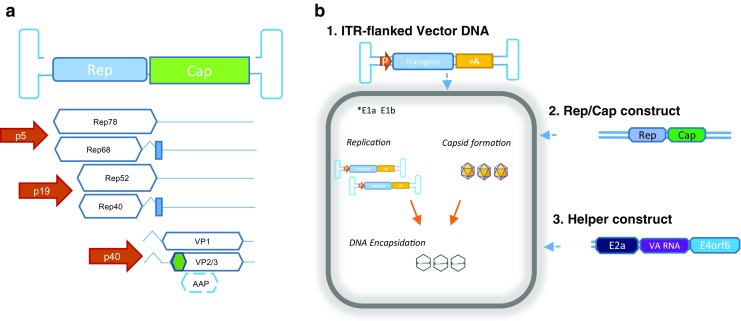Fig. 1.

Adeno-associated virus (AAV) vector biology. Wild-type AAV genome (a) contains Rep and Cap genes. Rep encodes four regulatory proteins that play important roles in replication and encapsidation of viral DNA, and their expression is controlled by p5 and p19 promoters. Cap encodes three capsid proteins and assembly-activating protein (AAP), regulated by p40 promoter. In an AAV vector (b), the wild-type AAV Rep and Cap genes have been replaced with the transgene of interest. Three components have to be delivered into the host cell line either by transfection or viral infection: vector AAV DNA containing the transgene of interest, Rep and Cap genes (also known as packaging construct), and helper genes from adenovirus. Rep78 and 68 promote AAV DNA rescue and subsequent replication. Cap proteins are synthesized in the cytoplasm and are shuttled to the nucleus for assembly. AAP supports assembly and maturation of the AAV capsid (Samulski and Muzyczka 2014). Rep52 and 40 interact with single-stranded DNA and pre-formed capsids to promote viral DNA encapsidation by a mechanism not yet fully understood (Ling et al. 2015). P, promoter; pA, polyadenylation sequence
